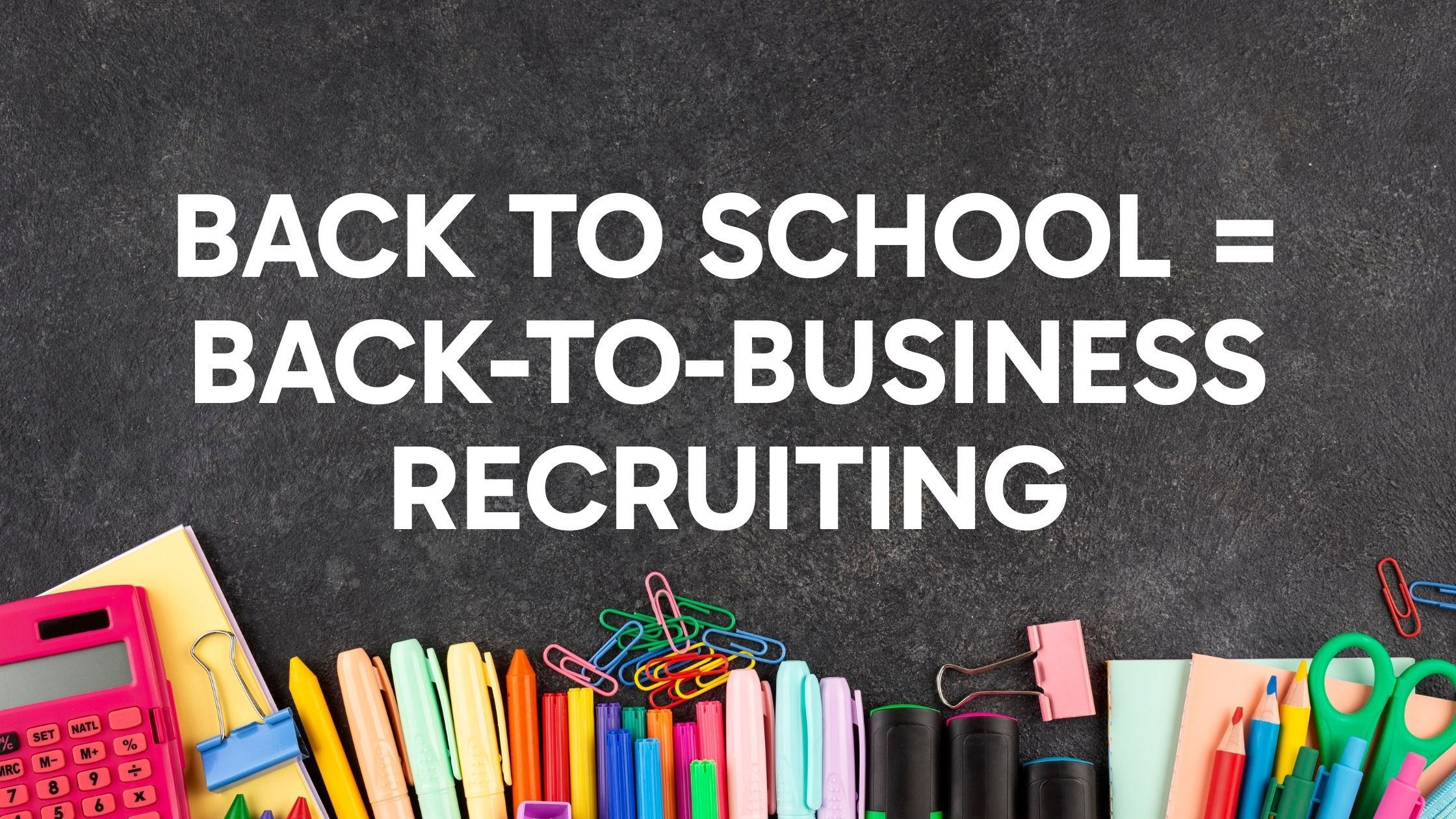For talent acquisition teams, August isn’t just the tail end of summer, it’s the calm before a major hiring wave. As the “back-to-school” season kicks in, it’s also a back-to-business moment for recruiters. Internship programs are ending, companies are finalizing Q4 headcount and starting next year’s budgets, new graduates and career changers are trying to find their place in the tough job market, and organizations are evaluating how AI will shape their recruiting processes.
This seasonal transition creates a golden opportunity for recruiters to build stronger pipelines, improve ROI, and hit the ground running in September. Here’s how to make the most of it.
Partner with L&D for Upskilling and Reskilling Initiatives
With AI, automation, and new technologies reshaping nearly every industry, 44% of core job skills are expected to change by 2027. That shift is already happening with roles in data analytics, digital marketing, logistics, and even customer service now demanding skills that weren’t on job descriptions just a few years ago.
This is where strategic partnerships with Learning & Development (L&D) teams come in. Recruiters who align with L&D can:
- Build candidate pools with future-proof skills by promoting internal upskilling programs to current employees, keeping top talent engaged rather than losing them to competitors.
- Close hard-to-fill gaps by reskilling nontraditional candidates into open roles, expanding the pool beyond those with “perfect fit” backgrounds.
By positioning themselves as connectors between hiring managers and L&D, recruiters not only fill roles faster but also increase the long-term retention and productivity of new hires - both major ROI drivers.
Target Recent Graduates and Career Changers Strategically
Fall is prime time for two major candidate groups: recent grads and career changers.
Recent graduates who haven’t landed their ideal role are re-engaging their job search and exploring career paths different from what they originally envisioned. Many are open to entry-level opportunities, contract work, and roles that offer strong development paths. For these candidates:
- Refresh job posting content to ensure it denotes minimal experience but high growth potential. Remove any “nice to have requirements” and focus on the essentials.
- Emphasize mentorship, learning, and advancement.
- Coordinate outreach to align with academic calendars - late August through September is when many are actively searching.
Career changers, meanwhile, are often motivated by a combination of burnout, market shifts, and new skill acquisition. Many have spent the past months upskilling through online courses or certifications. For this audience:
- Use language in postings that invites transferable skills (e.g., “customer service background” instead of “call center experience required”).
- Highlight stability, growth, and the ability to pivot into a new industry.
- Share examples of successful pivots within your organization to make the transition feel attainable.
Both groups require slightly different messaging, but they share one key need: a clear picture of how the role can help them grow.
Convert Summer Interns into Full-Time Hires
Internship programs aren’t just a summer formality - they’re one of the most cost-effective talent pipelines recruiters have. The National Association of Colleges and Employers (NACE) reports that 53% of interns became full-time hires in 2023, with employers citing stronger retention rates and faster onboarding for those who started as interns.
Companies like Insperity and General Dynamics Mission Systems have leaned heavily into intern-to-employee conversions in recent years, using them to fill critical roles while reducing recruitment costs. At General Dynamics Mission Systems, for example, interns in engineering and IT programs are often extended offers before their final semester, ensuring talent is secured well ahead of graduation.
To improve conversion rates, recruiters can:
- Give interns meaningful projects that align with the company’s real challenges.
- Provide structured mentorship and networking opportunities.
- Maintain consistent touchpoints after the program ends—whether through alumni groups, project updates, or early job postings—to keep them engaged until a role opens.
A healthy benchmark is a 50%+ conversion rate for eligible interns. Beyond that, track offer vs. acceptance rates to identify where you’re losing potential hires and adjust the experience or follow-up accordingly.
The August Advantage
August isn’t just about filling the last of summer’s roles - it’s about setting up Q4 success. Recruiters who use this time to partner with L&D, target emerging candidate groups, and leverage intern programs will enter the fall hiring surge with stronger pipelines, better-aligned talent, and a healthier recruitment ROI.
If you want your September to be less about scrambling for candidates and more about strategic placement, August is the month to act.

